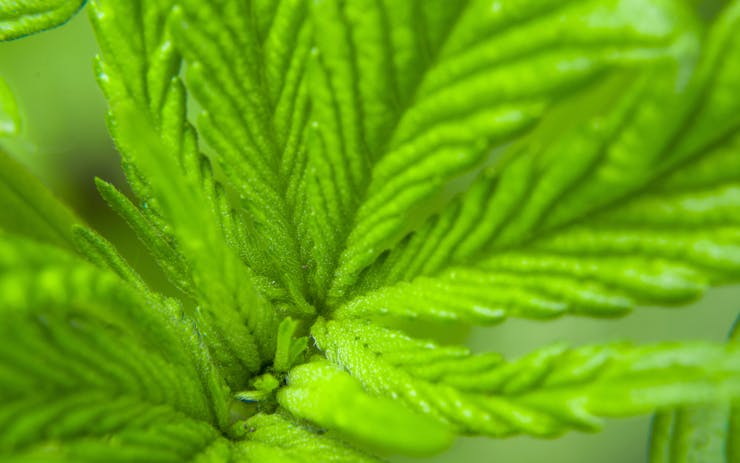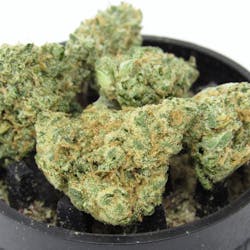Cannabidiol (CBD) trails tetrahydrocannabinol (THC) as the second-most prevalent cannabinoid found in cannabis, but you wouldn’t necessarily know that walking into your local dispensary and checking out the lab tests for your favorite strains. The emergence of high-CBD cultivars into the marketplace is in its infancy and has only seen a spike in demand within the last several years. Prior to this emergence, cannabis had been specifically cultivated to meet the demands of a market fueled by bag appeal and THC potency.
The shift in interest that drove cannabis breeders to focus on the propagation and dissemination of CBD genetics derived from several origins, one being the need to further explore the medical benefits of the compound. Facilitated by the interests of a handful of scientists and breeders, high-CBD strains that were once only selected and bred with the specific intention of extracting the beneficial compounds from the plant are now being hybridized to meet the palates and needs of a new market of CBD enthusiasts. It was through this process that some of the earliest high-CBD varietals were born.
A CBD-rich variety of cannabis can have anywhere between 4% and upwards of 18% potency of cannabidiol by volume, even higher in some rare phenotypes. Although it’s possible to achieve this potency of CBD in hybridized cannabis, these levels were traditionally most observed in non-THC containing hemp varieties. Through many years of selective hybridization, cannabis cultivators had unknowingly began to breed CBD out of the gene pool. It wouldn’t be until the utilization of gas chromatography to test cannabinoid potency when high-CBD varieties would begin to reemerge.
The credit to this moment can be traced back to 1998 in Britain with Geoffrey Guy, MD, and the foundation of GW Pharmaceuticals. Affiliated with the International Cannabis Research Society (ICRS), and with a grant from the British government to cultivate cannabis, Guy and his team sought a variety of CBD-rich cannabis strains to extract and isolate from. They found their strains through a Dutch seed company called HortaFarm, founded by expat cannabis legends Robert Clarke and David Watson. These unnamed, Dutch-bred high-CBD strains were among the first ever to be selected for CBD isolation.
With the passing of California’s 1996 Proposition 215 (AKA The Compassionate Use Act), interest in CBD would shift the the US west coast. Word of what was happing in Great Britain disseminated through some of the earlier publications to cover cannabinopathic medicine. O’Shaughnessy’s, a California publication named after the Irish physician credited with bringing cannabis to western medicine, was among the first to credit GW Pharmaceuticals for being able to select and isolate CBD varieties.
It wouldn’t be until the formation of Oakland, CA’s Harborside Health in 2006 by Steve DeAngelo when CBD strains would begin to reemerge on the west coast scene. By 2009, Harborside Health was utilizing gas chromatography through Steep Hill Labs to test cannabinoid potency. It was through these labs that some of the first ever verified high-CBD strains would emerge. In 2010, Project CBD began to reach out to farmers who had submitted high-CBD strains for testing in an act of preservation. This fresh west coast enthusiasm for CBD genetics led to some of the first ever CBD stabilized strains.
One of the undisputed champions of the Northern California CBD movement is Kevin Jowdry, Director and Owner of Wonderland Nursery in Humboldt, California. In a 2015 Seattle Hempfest interview, Jowdry credits the emergence of stabilized CBD to two distinct events. The first was the introduction of the Cannatonic line by Resin Seeds at Spannabis in 2008. Cannatonic’s ability as a chemotype to display a consistent range of high-CBD progeny landing all over the potency chart from 1:1 to 18:1 (CBD-dominant) made it a prime candidate for breeding projects.
According to Jowdry, Jaime, owner of Resin Seeds, distributed these genetics to a breeder in California, who led the first US Cannatonic “sift,” or genetic section process. The CBD variability of the Cannatonic line was capitalized on by the hybridization of several sub-varieties. A few of the heavy hitters born out of this cataclysm of CBD genetics were the C6 line (popularized for having a consistent 18:1 CBD/THC ratio), as well as ACDC, which was among the first sought-after CBD flower varieties.
Coincidentally, Lawrence Ringo of the Southern Humboldt Seed Collective was also breeding for stabilized CBD, and after testing his “Swiss Gold Genetics” for high-CBD markers, he created what would become known as “Sour Tsunami.” Kevin Jowdry worked closely with both breeders through Wonderland Nursery to offer CBD stabilized clones to all of Northern California and the Emerald Triangle.
Through the Northern California CBD breeding projects came two distinct patterns in cultivation and propagation. On one end were the stabilized Cannatonic varieties that were bred almost exclusively for oil production. These strains often exhibited unpalatable terpene profiles consisting primarily of spiked levels of myrcene and caryophyllene. The Cannatonic lineage, especially the C6 line, was known to be a heavy-yielding strain, but not very flavorful. For oil production, having a less than desirable flavor profile was of no concern as the most popular method for extracting medical-grade CBD oils is typically subcritical C02 (which kills terpenes, anyway).
On the other end came more palatable strains such as the Sour Tsunami and Harlequin lines. Unlike the Cannatonic varietals, these strains tested higher in limonene and pinene, exhibiting more desirable aromatic characteristics. Although lower yielding, these strains contained much more bag appeal and a higher THC ratio (in some cases), and contributed to their rise in popularity among a more recreationally driven artisanal market of consumers.
The market development for CBD-rich cannabis cultivars undoubtedly began, and to some element still exists, around the desire to fuel the CBD extraction market. However, a new cultivar-specific model has emerged, one that champions flavor and bag appeal to cannabinoid ratio. This new wave is fueled by the sweeping legalization movement and the demand to fill dispensary shelves with cannabis strains more diverse in their cannabinoid ratios.
Although still few and far between in many markets, high-CBD strains do exist and are rapidly growing in popularity. The next time you stop by your local shop and see a Tsunami variety on the shelf, give a nod to Lawrence Ringo and the rest of the CBD pioneers.






